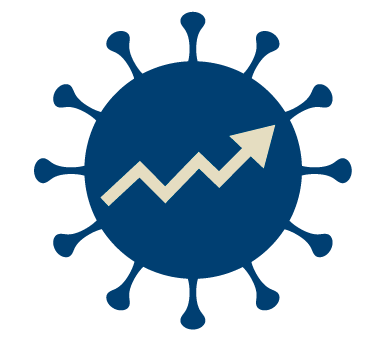Advise
This website is a commercial project about the risk of an influenza pandemic from a financial perspective. This doesn't constitute medical or financial advise. An exception may be the recommendation to buy face masks, as does any public health publication regarding pandemic preparedness. This website is mostly a collection of facts and expert opinions. It encourages researching this vast topic and provides the tools to efficiently do so.
Conflicts of Interest and Ethics
The author owns several of the stocks mentioned on this website. The company legally responsible for this website does not.
To some it may seem unethical to combine financial interests with the expectation of a pandemic. But due to the impossibility of pandemic insurance, a pandemic is a serious financial risk for many. Simply hoping that no pandemic will occur is the same as accepting this financial risk. Calling investing in bird flu stocks unethical is the same as demanding that other people should accept this serious financial risk. Analyzing the risk of a bird flu pandemic from a financial perspective doesn't negate potential human suffering due to infections. The economical disruption caused by infections and public health measures would result in suffering and deaths as well.
Buying bird flu stocks increases the stock price, which allows pharmaceutical companies to issue new shares at higher prices, ultimately supporting their business. An increased stock price also allows pharmaceutical companies to get better loan conditions when they use shares as collateral. It also allows them to pay employees with stock-based compensation to a larger extend. Investing in bird flu stocks supports companies that may save millions of lives.
Language and Agenda
This websites cites a broad range of sources with different writing styles and different perspectives. The language used on this website may sometimes appear technical and euphemistic, sugarcoating the horrific circumstances. In other instances the language used may be perceived as sensationalist, picturing the suffering in unnecessary graphic detail. The professionally muffled pleas of scientists, the nondescript wording in factory farming, the defiant compromising and deflection of politicians, and the silence regarding an eventual end of this panzootic manage to instill concern without any drastic words.
While this website demonstrates the pandemic risk emanating from factory farming repeatedly, this is not about a political agenda. This is not denying the animal rights issues in factory farming optimized for profitability. The simple reality is that demand for animal protein is leading to factory farming and an increased pandemic risk. Mitigating this collective risk individually by buying bird flu stocks may seem like satire to some. But this website is only about the risk of an influenza pandemic from a financial perspective, in the next few years. This website is about an existing risk, not about how anything should be. Focusing on the financial risk doesn't invalidate other perspectives.
The Social Pandemic
The Covid-19 pandemic has certainly helped to improve public health processes. But the motivation of health care workers seems to have deteriorated due to the burden of the pandemic, across many countries. The ability of the general population to deal with a severe pandemic has been greatly diminished. One factor is general pandemic fatigue. Only 21% of the adult US population got the bivalent Covid-19 booster vaccine of 2022.
Possibly worse is the radical opposition to public health measures that surged during the Covid-19 pandemic. Based on reasoning that can only be described as pathological, every single fact is denied and every single solution is attacked. A preview of what this would look like with H5N1 can be found in the comment section of this article. It is unclear how many already fatigued people would resort to such pathological reasoning when facing the devastating news of a second, probably more severe pandemic.
Pandemics may be classified as natural disasters, but with more information and medical countermeasures available, this may not always be a useful definition anymore. A H5N1 bird flu pandemic might just as well be primarily a social phenomenon, fueled by the existing mental health and disinformation crisis. Understanding how human behavior may cause and amplify a H5N1 pandemic is part of the risk assessment.
As explained in "The Rules of Contagion" the spread of ideas is comparable to the spread of pathogens. We are already experiencing some sort of disinformation or mental health pandemic. This has not only the potential to cause and amplify an influenza pandemic, but it also prevents the only practical solution, the substitution of animal proteins.
Denial is deeply rooted in human nature. We routinely deny death or deny living through an extinction event with the ecosystem we rely on collapsing around us. Denial may not only cause and amplify a pandemic, but also cloud our judgement regarding the risk of an H5N1 pandemic.
